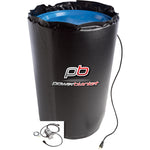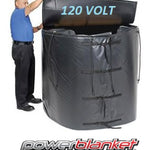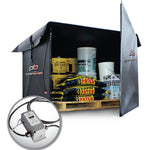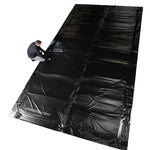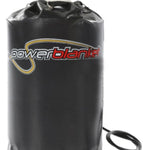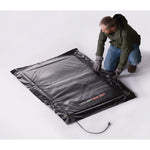You have no items in your shopping cart.
Article At-a-Glance
How Do Convection Heaters Work?
Convection heaters operate by using convection currents to circulate warm air throughout a room, where cool air is drawn in from the bottom, heated by an internal element, and then rises as it becomes less dense, effectively displacing cooler air and ensuring efficient, even heating.
Key Takeaways
- Understand Convection Currents: Convection heaters utilize the natural movement of air, where cool air is drawn in from the bottom, heated by an internal element, and rises as it becomes less dense, effectively circulating warmth throughout the room.
- Key Components and Functionality: These heaters typically consist of a heating element and may include a fan to enhance airflow, ensuring efficient heat distribution without relying solely on radiant heat.
- Efficient Heating Process: By leveraging the principle of convection currents, these heaters provide even and consistent heating, making them ideal for spaces where people spend extended periods, such as offices and warehouses.
- Types of Convection Heaters: Various types, including panel, cabinet, and infrared heaters, offer different advantages, such as quick heating or durability, catering to both industrial and domestic applications.
- Safety and Energy Efficiency: Convection heaters are designed to be energy-efficient, using minimal power compared to other heating options, and include safety features to prevent fire risks, especially in hazardous environments.
What is a Convection Heater
Convection heating systems are often used for supplying complete room heating. It takes time to heat all rooms. However, the heat produced may last. They also are ideal for areas where people tend to stay for extended periods, such as offices or warehouses. As with any other heater type, a convection furnace has unique characteristics that enable specific applications. This article overviews convection heating equipment, its uses, and its safety features. A convective heater is an efficient and reliable heating device that provides high-temperature comfort and a low cost. Let's dig in a little deeper to understand convection heat.
How Does a Convection Heater Work?
Unlike radiant heaters, which transmit heat through electromagnetic fields, convection heaters use air directly. In simple terms, the process involves convection current circulating through the heat source. Essentially they heat the air as it passes through the unit. This heat is transmitted into the environment, which allows for expansion and rise in the heated atmosphere. The heat of air is less dense and cooler. These are two key concepts in convection heat generation. The hot air reaches the convection heater when the heated air rises and displaces room-temperature air and is heated.
When comparing radiant heating and convection heaters, there are a few key differences that can come into play. But for many of the applications that our clients are looking for, one of the most important differences is whether they are explosion-proof or not.
Regarding heat transfer, convection heat and radiant heat can both risk safety issues if they are not up to specific standards. With electric convection heaters such as our Norseman line of convection heaters, they can efficiently warm air and heat the entire room evenly while also maintaining a safe environment that will prevent fire risk.
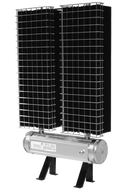
$2,902.90 USD
XB Explosion-Proof Natural Convection Heater w/ Thermostat (480V)
Types of Convection Heaters
There are several different types, each of which has its advantages and disadvantages. Some common types include:
Panel Heaters: Panel heaters are a type of forced-convection heater that uses either electric resistance coils or oil-filled chambers to generate heat. Panel heaters are often used in industrial applications because they can reach high temperatures quickly and efficiently. However, panel heaters can also be used in domestic settings, such as in garages or workshops.
Cabinet Heaters: Cabinet heaters are similar to panel heaters, but they enclose the heating element in a metal cabinet. This helps to protect the element from damage and makes the heater more durable overall. Cabinet heaters are often used in commercial and industrial settings.
Infrared Heaters: An infrared heater uses infrared radiation to generate heat. These types of convection heaters are often used in outdoor settings because they can effectively radiate heat even in windy conditions. Additionally, infrared emitters can be used to dry wet surfaces or products quickly and efficiently.
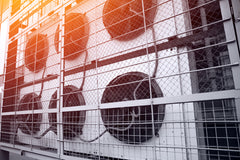

Do Convection Heaters Use a lot of Power
No, industrial convection heaters do not use a lot of power. In fact, the difference in power usage between other heating options and an industrial convection heater is only about 5%. So, if you're looking for an efficient way to heat your space, an industrial convection heater is a great option.
Safety
There have been numerous fires in recent years caused by heaters. Nevertheless, it is important to know that flammable objects cannot be located within a heating system; this could cause damage. Flammable materials such as curtains, carpet, or burning liquids must stay at room temperature if it is to be avoided.
This is where explosion-proof convection heaters such as Norseman heaters benefit companies that operate in hazardous areas. These explosion-proof heaters allow companies to still benefit from heated areas while also being able to worry less about the risk of explosions and having their heating units remain safe.

Why Use a Convection Heater
Convective heaters are an efficient and reliable way to provide high temperatures for comfort or low-cost production purposes. Especially when looking for a safe heating system for commercial applications, you can see that convection heaters stand apart from the rest. When selecting a convective heater for a specific application, it is important to consider the size of the area to be heated, the desired temperature, and the type of environment in which the heater will be used. By considering these factors, you can select the best possible convective heater for your needs.
If you have more questions to need help narrowing down which heater is right for your needs, reach out to our amazing customer service team.







